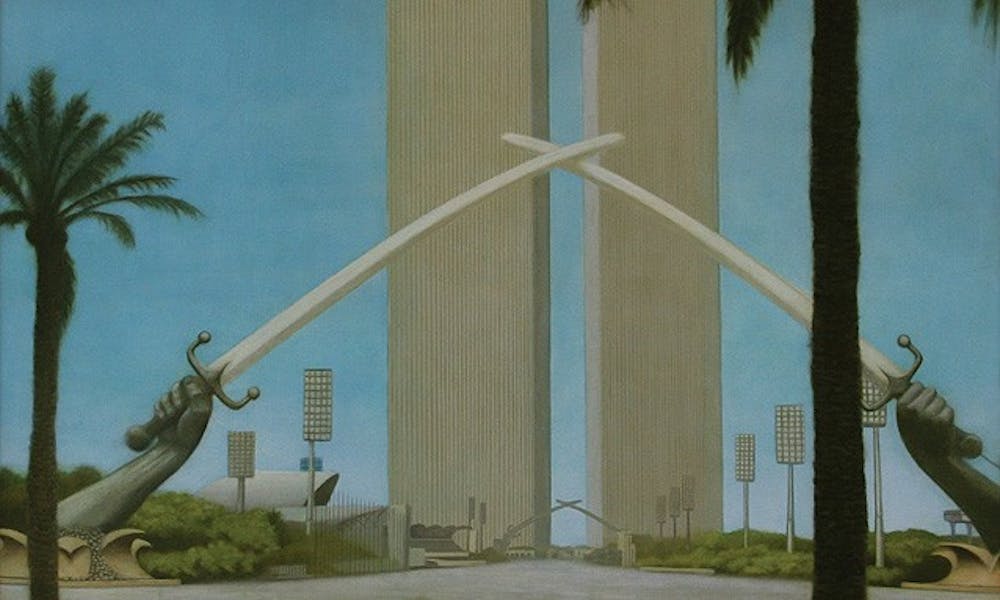Years before 9/11/2001, when I couldn’t afford to rent a studio in New York, I pursued a “verbal art” project; I asked people the question: “If someone destroyed the Statue of Liberty, would you rebuild it, or turn the ruins into a historical monument?” Everyone asked answered: “Rebuild it, obviously!” Although there are many differences between Lady Liberty and the fallen Twin Towers and my fictional scenario never implied the horror of mass murder, the messy rise of the former Freedom Tower (now officially called World Trade Center 1) and the decision not to rebuild the Twin Towers have shown that there is nothing obvious about the politics of collective healing and recovery.
I was born and raised in a neighboring country with a much longer urban history than the United States. My hometown was Mexico City, once the Aztec capital Tenochtitlan. The most important archeological site from the Aztec Empire was discovered right around the time I was born. While digging next to the colonial-era Cathedral for the city’s subway system, Templo Mayor was found, a landmark which for centuries was thought to have been destroyed by the Spaniards, who had the unfortunate habit of smashing the temples of previous civilizations to create the foundations for their own. After much debate, the decision was made not to rebuild the temple, leaving its ruins laid bare as an open wound in the heart of a city that is at once contemporary, colonial and indigenous. The decision to leave a harsh and daily reminder of death and destruction in public view may only be possible after the conflict has cooled off for centuries. Even if we sympathize with the goal of historical awareness, we may regret being deprived of having an Aztec temple in the midst of a modern city, standing as tall as the Spanish cathedral that was meant to erase it.

Many argue that not rebuilding the Twin Towers grants victory to those who destroyed them. Others think it is not “American” to dwell in the past, and that new buildings and plans allow us to move on. This short text and the artwork it discusses will not settle the matter, but they will hopefully add some critical and aesthetic insight to a question that involves history, memory, politics and culture.
I had been living in New York for more than seven years when the WTC was attacked. I watched speechless from Brooklyn as the second tower came down, knowing that thousands of people had died before me in that very instant. Like many others, I decided to translate the collective anger, trauma and hope for reconciliation into artwork. Wanting to produce a truly international memorial that would consider 9/11/2001 in relation to other major global events, the concept of rebuilding the Twin Towers in different cities around the world came to me almost immediately. I began working on the project in October 2001, when I read that U.S. soldiers had requested that remnants of the WTC be brought to Kabul, to be placed in the middle of the first military camp of Operation Enduring Freedom. I conceived of these fictional Twin Tower reconstructions as works that would develop over many years, out of respect for the depth of the trauma.
Between 2001 and 2005, I researched widely, sketched and created possible reconstructions through digital simulations. Among other well-documented, yet little-known facts, I learned that the beams from New York’s Tribute in Light were reconstructed in other cities, projected onto the skylines of Paris, Liverpool, Budapest and Montevideo. In 2006, I began to incorporate these cities and other sites of global significance into elaborate paintings done in defining styles of the Western canon. Entitled Phantom Limbs, these works are at once hopeful, critical and contemplative. A selection of these paintings is currently on view at Stephan Stoyanov Gallery in New York. Although in 2004 I decided that painting would best encompass the historical and emotional range required for my memorial, I later found that social and digital media would best harness the collective imagination needed to consider what it means to picture the Twin Towers rebuilt around the world. In 2006, I began the Twin Towers Go Global project, a complex participatory work which now includes many collaborators, a website and three special anniversary productions for the AND AND AND platform of Documenta 13 in Kassel, Germany. TTGG’s recent international open call to propose host cities for the Towers received almost sixty submissions.
Pedro Lasch is an assistant research professor for the Art, Art History and Visual Studies departments.
Get The Chronicle straight to your inbox
Signup for our weekly newsletter. Cancel at any time.

